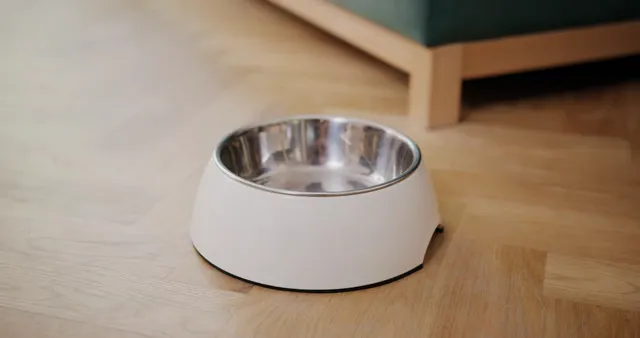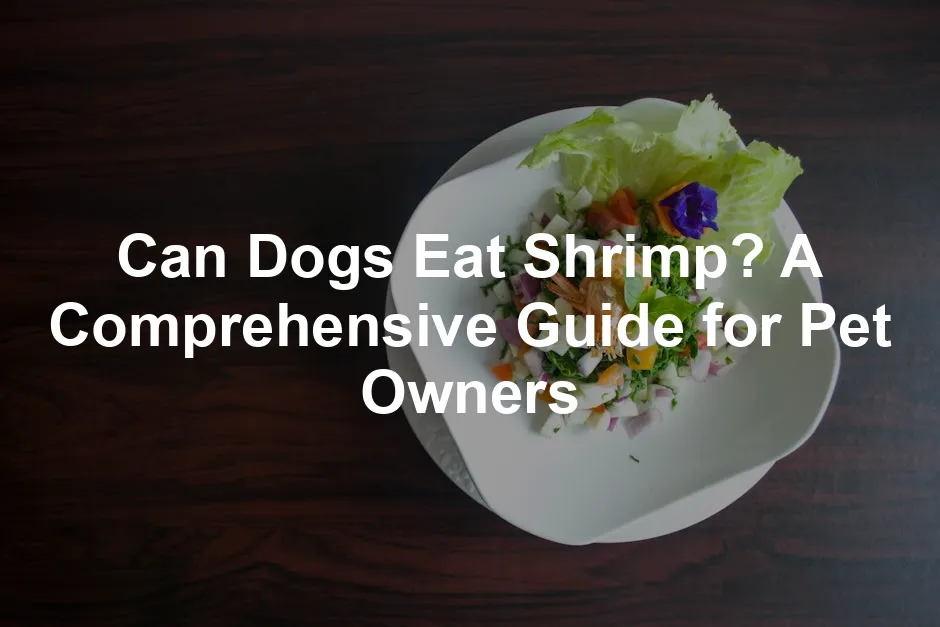Introduction
Picture this: You’re enjoying a delicious shrimp cocktail, and your dog is giving you those puppy eyes that could melt the hardest of hearts. It’s tough not to share a taste of that succulent seafood, right? After all, who wouldn’t want their furry friend to join in on the culinary delights? But wait! Before you toss a shrimp their way, you might wonder, “Can dogs eat shrimp?” Well, the answer is yes, but with some caution! Shrimp can be a delightful treat for your pup, but it comes with health benefits and potential risks. On one hand, shrimp is packed with protein and essential nutrients. On the other hand, it can be high in cholesterol and pose some health risks if not prepared properly. As we dive into this topic, we’ll explore the nutritional benefits of shrimp, the risks of feeding it to dogs, and the safest ways to prepare it. This guide aims to equip you with all the information you need to make an informed decision about sharing shrimp with your four-legged friend. So get ready to learn everything from the benefits of shrimp to safety precautions, ensuring your pup enjoys a tasty yet safe seafood experience!
Summary of Key Points
– Nutritional Benefits: Shrimp is rich in protein, vitamins, and omega-3 fatty acids, contributing to overall health. – Risks: Dogs can experience high cholesterol, potential allergies, and choking hazards from shells and tails. – Preparation: Only serve cooked, deveined shrimp in moderation, as overindulgence can lead to health issues. – Alternatives: Consider other seafood options that are safe and nutritious for dogs. Curious about the details? Stick around! By the end of this guide, you’ll have all the knowledge you need to safely share shrimp with your beloved canine companion. Let’s get started!Can Dogs Eat Shrimp?
Yes, dogs can enjoy shrimp, provided it’s prepared correctly! Cooked shrimp, without shells or tails, is a tasty treat that many pups love. But let’s dig a bit deeper into what makes shrimp a suitable dog snack.Health Benefits
Shrimp is not just a delightful seafood option; it’s also a powerhouse of nutrients! Here’s a closer look at its benefits: – High in Protein: Shrimp is loaded with protein, which is essential for building and repairing tissues in your pup’s body. – Low in Fat: It’s a lean option, making it a great addition to a dog’s diet, especially if they’re on a weight management plan. – Essential Vitamins: Shrimp is rich in vitamin B12, crucial for your dog’s metabolism and nerve health. It also contains minerals like phosphorus, which supports bone health. – Antioxidants and Omega-3 Fatty Acids: These nutrients help fight inflammation and support overall health, including skin and coat condition.
Sourcing Shrimp
When it comes to shrimp, sourcing matters! Wild-caught shrimp is generally considered a better option than farm-raised varieties. Farmed shrimp may contain harmful additives or antibiotics. Always check labels and strive for the healthiest choice for your furry friend. In conclusion, shrimp can be a nutritious and enjoyable treat for dogs when prepared with care. Keep reading to learn more about safe preparation methods and how to introduce this seafood delicacy into your pup’s diet!Nutritional Breakdown of Shrimp
Shrimp is more than just a tasty treat for your furry friend; it’s also packed with nutrients that can positively impact your dog’s health. Let’s break down some key nutrients found in shrimp and their benefits. – Vitamin B12: – Vital for metabolism and energy production. – Supports gastrointestinal health, keeping your pup’s digestive system running smoothly. – Omega-3 Fatty Acids: – Great for heart health, helping to reduce the risk of heart disease. – Possesses anti-inflammatory properties, which can benefit dogs with joint issues or skin conditions. – Antioxidants: – Help combat free radicals, which can cause cellular damage. – May aid in reducing the risk of chronic diseases, including certain cancers. – Phosphorus: – Essential for healthy bones and teeth, supporting overall skeletal structure. – Plays a role in energy production and maintaining cell function. Incorporating shrimp into your dog’s diet can provide these valuable nutrients, but moderation is key. Always ensure that shrimp is cooked properly and served without shells or tails to avoid choking hazards. By understanding the nutritional benefits of shrimp, you can make informed choices about your dog’s diet while treating them to something special!How Much Shrimp Can Dogs Eat?
Feeding shrimp to your dog can be a delightful treat, but moderation is essential! Different dog sizes require varying amounts of shrimp to keep their diets balanced and safe.Portion Sizes by Dog Size
– Small Dogs: For your petite pooch, limit shrimp to 1-2 pieces. This size is perfect for their tiny tummies! If you’re curious about creating a safe environment for your small dog, check out this guide on How to create a safe play area for small dogs.– Medium Dogs: Medium-sized furballs can enjoy 2-3 pieces. It’s a nice, tasty addition without overwhelming their systems. – Large Dogs: Big pups can snack on up to ½ cup of shrimp. Just make sure they chew it well! It’s vital to monitor your pup after introducing shrimp into their diet. Some dogs may react differently, even if the quantity is appropriate. Always keep an eye out for any unusual behaviors or signs of distress.Creating a safe play area is essential for small dogs. How to create a safe play area for small dogs
Importance of Moderation
Shrimp is a treat, not a meal replacement. Too much shrimp can lead to health issues, including high cholesterol. So, while it’s tempting to share, stick to the portion guidelines. Remember, consult your veterinarian for personalized advice on your dog’s diet. They’ll help you navigate the shrimp seas and ensure your pup remains healthy and happy!
Allergic Reactions and Intolerances
Just like humans, dogs can have allergies. Shrimp allergies are a possibility, and it’s essential to be vigilant. Signs of an allergic reaction can manifest as itching, gastrointestinal distress, or worse.Signs and Symptoms
Watch for these red flags: – Itching or Scratching: If your dog is suddenly scratching more than usual, it could be a sign. – Gastrointestinal Distress: Vomiting or diarrhea can indicate trouble. – Swelling: Notice any unusual puffiness around the face? It might be time to call the vet.Introducing Shrimp Gradually
When introducing shrimp into your dog’s diet, start slowly. Offer a small piece and wait to see how they react. This cautious approach helps you identify any potential allergies without overwhelming their system.What to Do If an Allergic Reaction Occurs
If you suspect an allergic reaction, stop feeding shrimp immediately. Monitor your dog closely for worsening symptoms. If they exhibit severe reactions, like swelling or difficulty breathing, contact your veterinarian right away. Quick action can make all the difference in keeping your furry friend safe and sound! By understanding the risks and signs, you can enjoy sharing shrimp with your dog while ensuring their health remains a priority. Happy snacking!
Safe Alternatives to Shrimp
When considering what seafood to share with your furry friend, shrimp is just one option. Luckily, there are several other seafood delights that are not only safe for dogs but also packed with nutritional benefits. Let’s take a look at some alternatives that will make your pup wag their tail with joy!Sardines: A Nutritional Powerhouse
Sardines are tiny but mighty! These little fish are loaded with omega-3 fatty acids, which are excellent for your dog’s skin and coat. They’re also rich in vitamin B12, essential for energy production and neurological health. Preparation Tips: – Opt for fresh or canned sardines packed in water, without added salt or seasonings. – Remove any bones, as they can pose a choking hazard. – Serve them in small portions; even a few sardines can make a tasty treat.
Salmon: A Heart-Healthy Choice
Salmon isn’t just a favorite for humans; it’s also a fantastic option for dogs! This fish is high in omega-3 fatty acids, promoting heart health and reducing inflammation. Plus, it’s full of protein, making it a great addition to your dog’s diet. Health Benefits: – Supports healthy skin and coat. – Aids in joint health and mobility. Safe Preparation: – Always ensure the salmon is cooked thoroughly. Raw salmon can carry harmful parasites, so avoid feeding it raw. – Avoid seasoning or using oils. Simply baking or grilling it without any additives is best.Green-Lipped Mussels: Joint Health Heroes
These mussels are not just a delicacy for humans; they’re also known for their remarkable health benefits for dogs. Green-lipped mussels are rich in omega-3 fatty acids and glucosamine, which can support joint health and reduce inflammation. How to Serve: – Cook them thoroughly and remove the shells. – Offer them in small amounts, as they can be quite rich.The Importance of Variety
Just like us, dogs thrive on variety in their diets. Offering different proteins can ensure they get a range of nutrients. Seafood like sardines, salmon, and green-lipped mussels can be excellent additions to their meals. Not only does this keep their diet interesting, but it can also help prevent food sensitivities or allergies that may arise from eating the same food repeatedly. Switching up your pup’s diet with these safe seafood options can provide them with essential nutrients while keeping mealtime exciting. Remember, moderation is key! Always introduce new foods slowly and consult your veterinarian if you have any concerns. Your dog will appreciate the culinary adventure, and who knows? You might even get a few puppy kisses for your efforts!
Conclusion
In summary, shrimp can indeed be a nutritious treat for dogs, but it must be prepared and served correctly. Remember to remove shells and tails, cook it thoroughly, and offer it in moderation. As with any new food, consulting with your veterinarian before introducing shrimp or other seafood into your dog’s diet is always a wise move. Sharing safe food experiences can create a special bond between you and your furry friend. After all, there’s nothing quite like watching your pup savor a delicious treat. So go ahead, whip up some shrimp or try out those safe alternatives! Your dog will thank you with wagging tails and happy barks.FAQs
Is shrimp toxic to dogs?
No, shrimp is not toxic to dogs. In fact, cooked shrimp can be a tasty treat for your furry friend! However, moderation is crucial. Too much shrimp can lead to health issues, particularly due to its high cholesterol content. Always ensure the shrimp is cooked thoroughly and served without shells or tails to avoid choking hazards.
Can dogs eat shrimp shells or tails?
No, dogs should not eat shrimp shells or tails. These parts are difficult to digest and can pose a choking risk or cause intestinal blockages. Always remove the shells and tails before giving shrimp to your dog. Stick to the meaty part for a safer treat!
How to tell if my dog is allergic to shrimp?
If you suspect your dog may be allergic to shrimp, keep an eye out for these signs: – **Itching or scratching**: Unexplained scratching could indicate an allergy. – **Gastrointestinal upset**: Watch for vomiting or diarrhea after eating shrimp. – **Facial swelling**: Any unusual puffiness around the eyes or face is a cause for concern. If your dog shows any of these symptoms after consuming shrimp, stop feeding it immediately and consult your veterinarian. It’s better to be safe than sorry!
What are the best ways to prepare shrimp for dogs?
When preparing shrimp for your dog, keep it simple. Here are the best practices: – **Cook it**: Always cook shrimp thoroughly by boiling, steaming, or grilling it. Avoid frying, as it adds unnecessary fats. – **Remove shells and tails**: Ensure shrimp is deveined and free from shells or tails. – **No seasoning**: Skip the salt, spices, or sauces. Plain shrimp is best for your pup! By following these guidelines, you can safely serve shrimp as an occasional treat.
Can dogs eat prawns, and is it the same as shrimp?
Yes, dogs can eat prawns, and they are similar to shrimp. Both belong to the same family of shellfish and share similar nutritional benefits. However, always ensure that prawns are cooked, deveined, and served without shells or tails, just like shrimp. Whether it’s shrimp or prawns, moderation is key!
What should I do if my dog eats something harmful?
If your dog eats something potentially harmful, act quickly! Here’s what to do: 1. **Stay calm**: Your reaction can affect your dog’s behavior. 2. **Assess the situation**: Determine what your dog ate and how much. 3. **Check for symptoms**: Look for signs of distress, such as vomiting, diarrhea, or lethargy. 4. **Contact your vet**: If you suspect your dog ingested something toxic or harmful, call your veterinarian immediately for guidance. They can provide specific instructions based on the situation. Your swift action can help ensure your dog’s safety and well-being!
All images from Pexels





